The beginning of the year has come and gone and, to be honest, the first quarter is just about through too. I’ve added a few thousand kilometres to my car’s mileage, and a few new species to my Bradypodion list, which include:
Bradypodion ngomeense
Everyone always has plans for Easter and the extra-long weekend is typically a little crazy, especially on the coast. I contacted a friend, Luke Kemp, who’s based in Grahamstown, to see if he was interested in tracking down yet another dwarf chameleon. The last time we went out searching for dwarf chameleons in the Eastern Cape we were in Port Elizabeth, which was a really successful endeavour. And so, we hoped to replicate that success in Morgan Bay.
So that was it. Luke and I agreed to meet in Morgan Bay on Friday; a quick 300kms from Grahamstown for Luke, and a slightly longer drive through the Transkei for me.
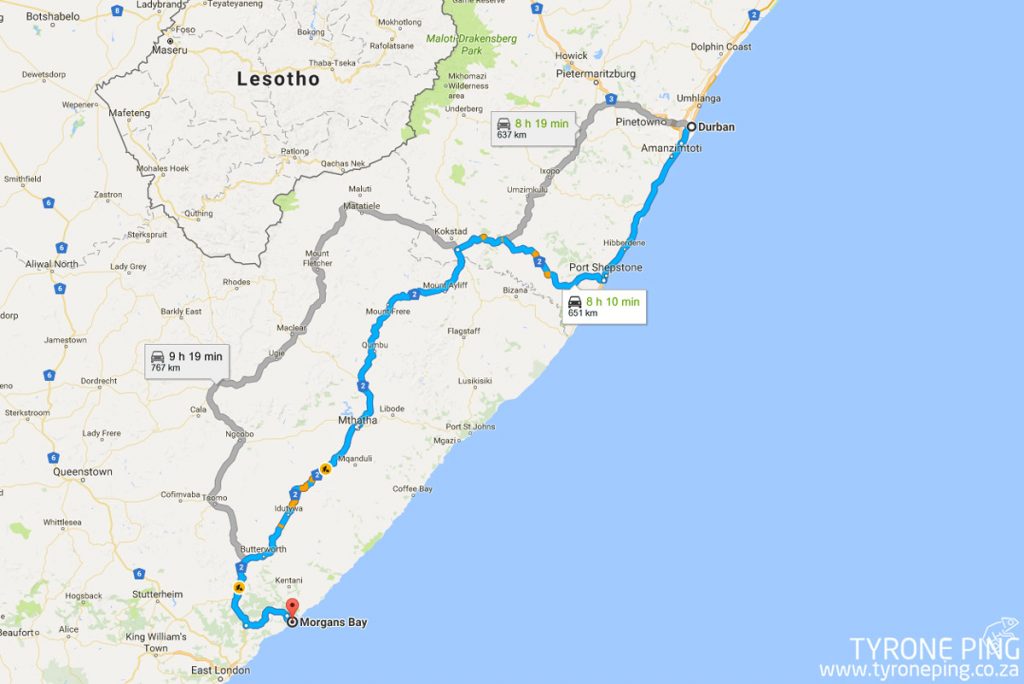
In a roundabout sort of way.
Opting for the blue route, I left home at 4:30am. Always go the blue route; life is too short for the easier drive and longer arrival times. Travelling through the lower part of Kwa-Zulu Natal is spectacular. The long, misty, forested roads between Harding and Kokstad are some of my favourites. Mostly due to the lack of vehicles, and kilometres of nothingness (with the exception of pine forests, not too dissimilar from the panorama route of Mpumalanga), but with slightly less grandeur.
The beauty of road trips on your own is that you have full control of the audio selection, and you can make as many- or as few- stops along the way for photo opportunities. I took full advantage of this on a few occasions along my route.

Shortly after crossing the Great Kei bridge there was finally a sign that I was in the right place, so I made the obligatory ‘pull over, post a sticker, shoot a photo’ stop before I continued on for the next 34KMs, weaving my way down towards Morgan Bay on the coast. Morgan bay is ‘in between’ Coffee Bay and East London; I say ‘in between’ loosely, as it’s around 70KMs outside of East London, and around 200KMs from Coffee Bay, simply because you can’t access the one from the other, besides along the coastal road, that is.
The Transkei often gets a bad rap, and you’ll hear the stories of ‘monster’ potholes, waiting hours and hours in stop-and-goes along the way, and waiting for road maintenance. These negative experiences are often just passed on from one guy in his fancy SUV to another and then suddenly the Transkei is an impassable track in deep dark Africa, which is really isn’t.
Although the national road is just that- a national road- it’s no N1 or N3. But, what it lacks in traffic and vehicles, it makes up for with feral dogs and domestic farm animals. One thing to remember: concentrate on your surroundings and keep a decent following distance, because the local dogs and donkeys don’t look twice before they cross the roads. On the drive down, there were easily 30/40 road-kill dogs, donkeys, and goats. The Transkei isn’t built for high traffic, so when driving through the rural lands be considerate of the local people and their animals.
After arriving in town (again, a loosely used term), I made my way to Yellowwood Forest, met our hosts Robyn and Sean Rohm, and settled in. Shortly after, Luke arrived back from the beach where he’d been scratching around while waiting for me to arrive. We made short work of setting up our tents, had a cup of tea, and quickly found the worst herp of the trip.
Acontias plumbeus – Giant Legless Skink.
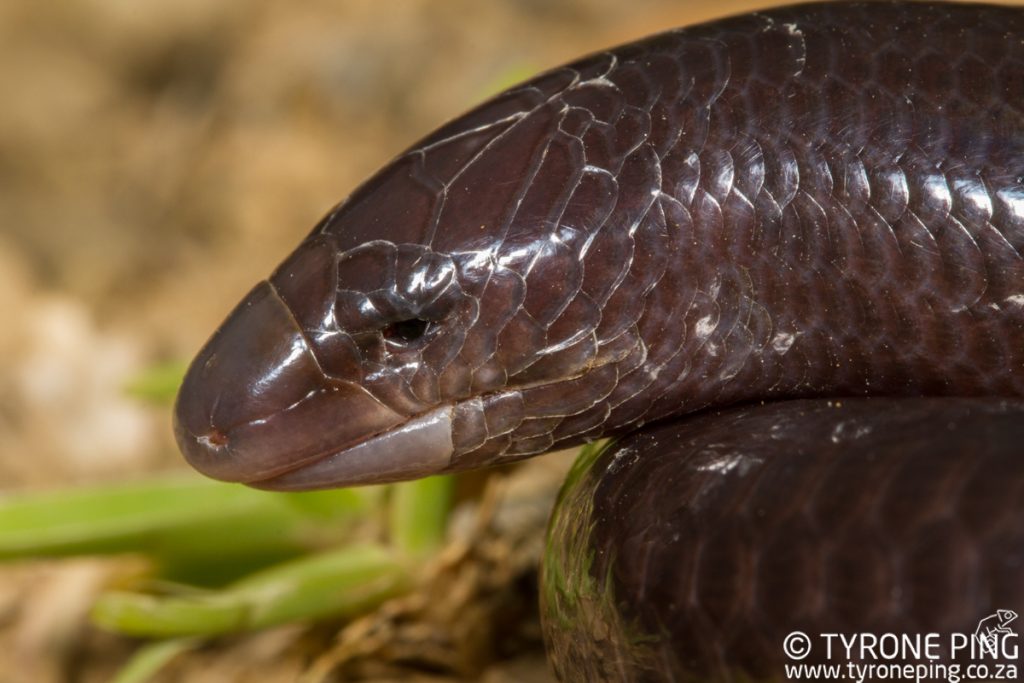
Initially there was some confusion as to the exact identification of this species, but we’ve settled on A.plumbeaus for now.
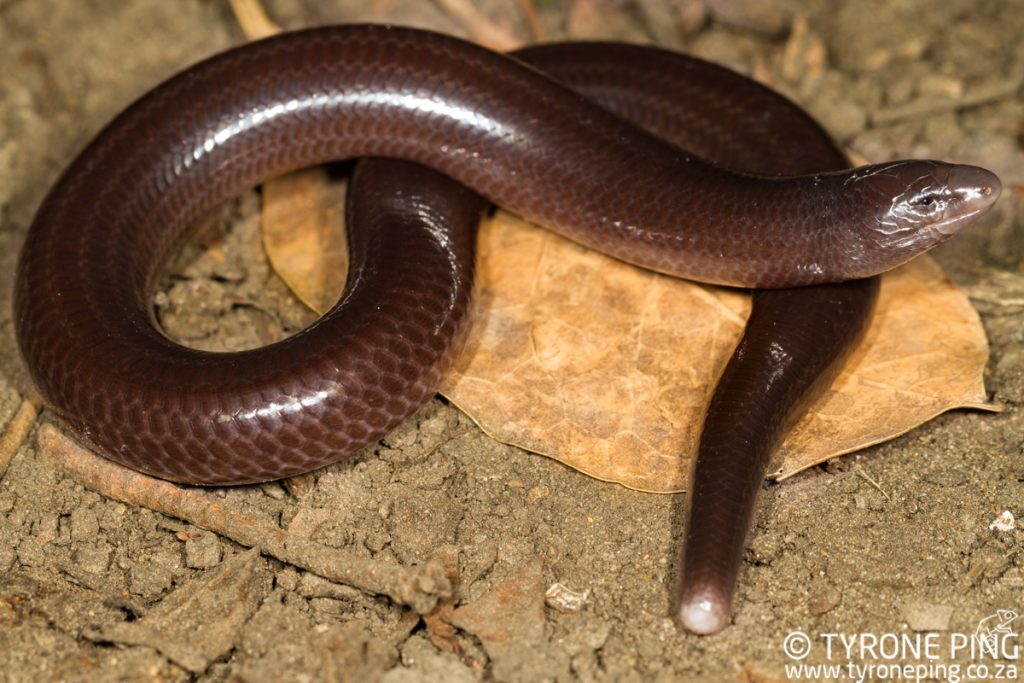
Not long after this we walked the various paths that lead through the dense Yellowwood forests on the property, and I spotted this nice example of a Western Natal Green Snake. It was right at eye level, just off the path.
Philothamnus natalensis occidentalis – Western Natal Green Snake.
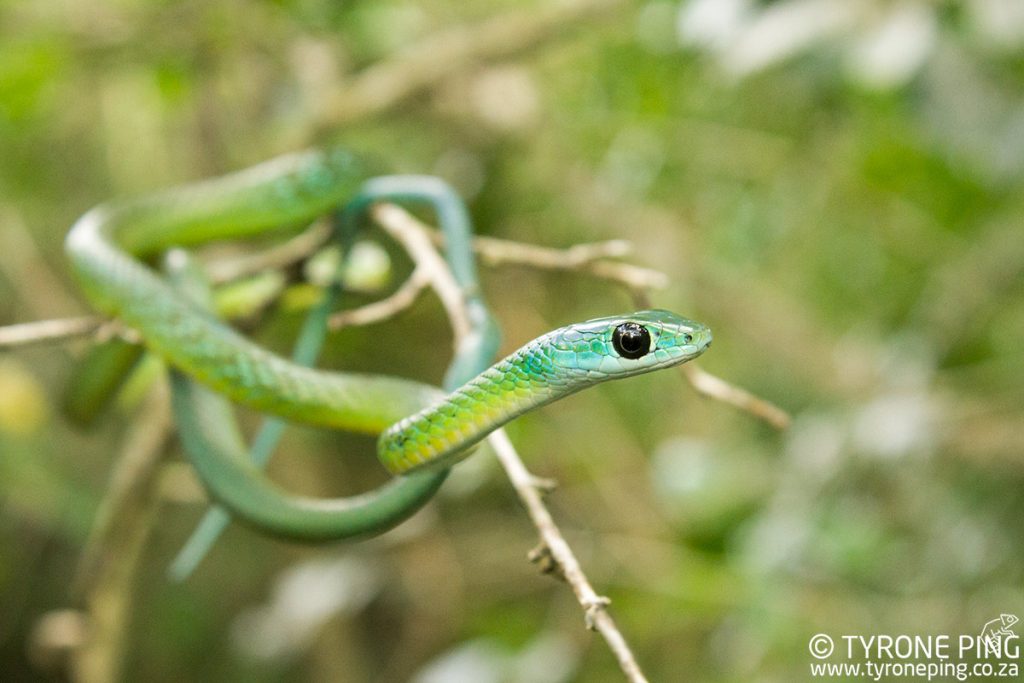
It’s interesting to note (in the next two photos) how the scales on either side of this snake’s head differ.
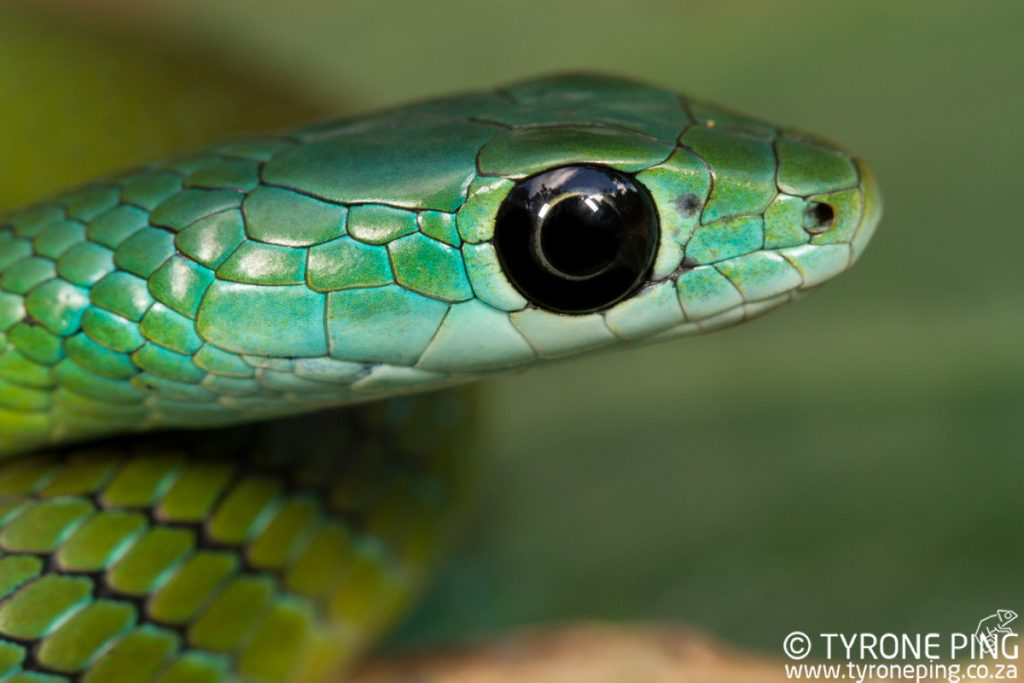

Scale counts can’t always be trusted fully, but there’s no mistaking these bright green and turquoise snakes from the Eastern Natal Green Snakes found much further North.
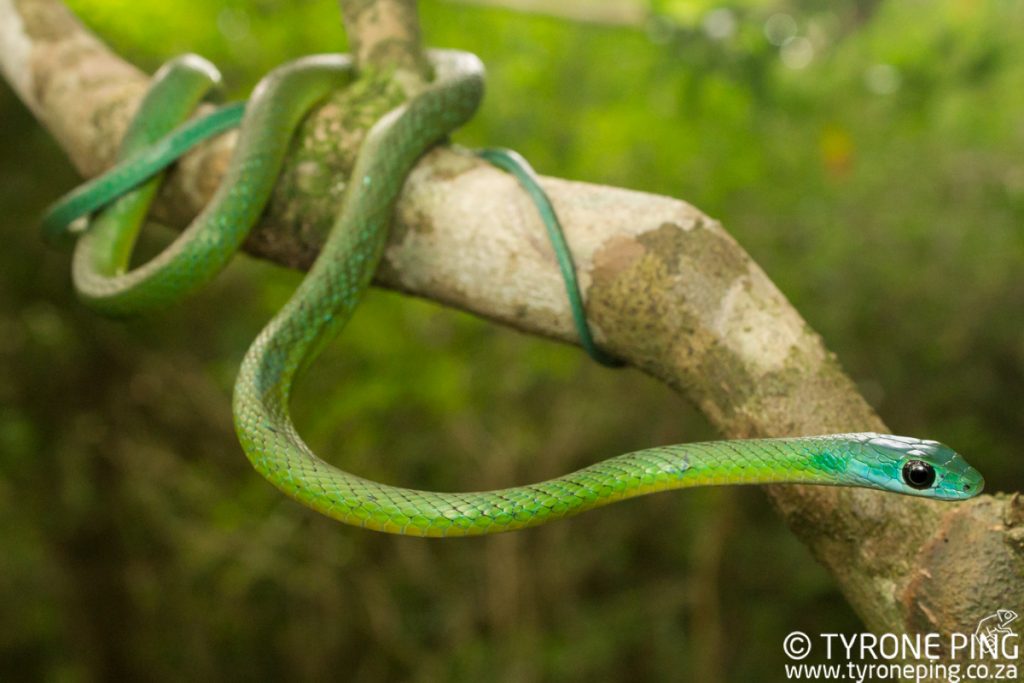
The photo behind the photo.
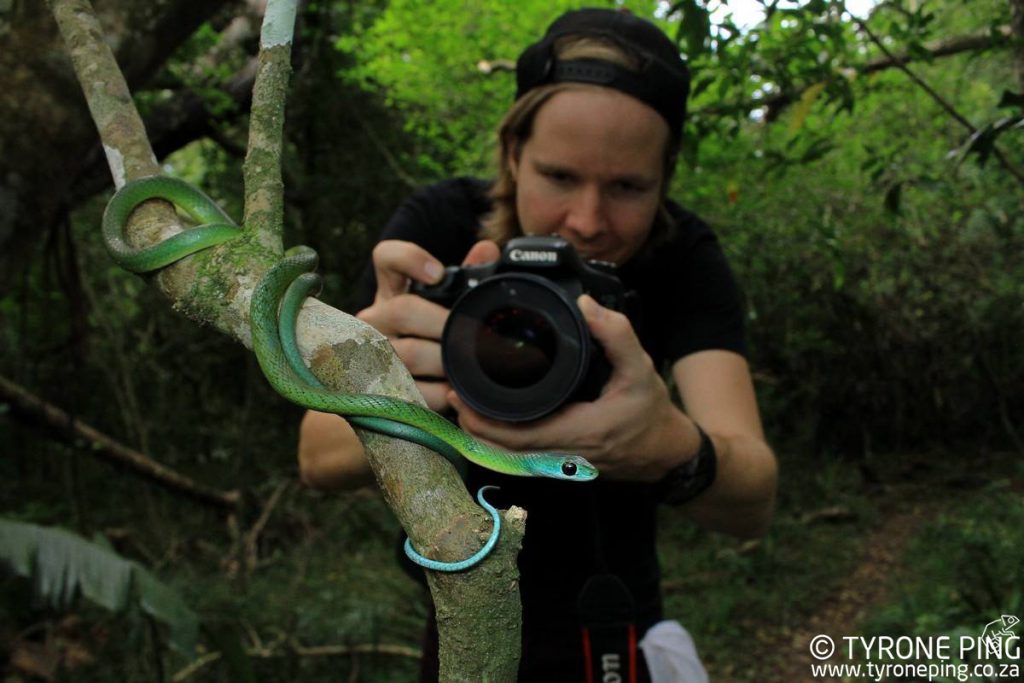
Photographing a Western Natal Green Snake in Morgan Bay. Photo by Luke Kemp.
At this time of year Morgan Bay is said to be rather temperamental with the weather, with minutes of rain pelting down, and blue skies soon after. So, we were forced to play a bit of hide and seek with the rain when out in the field, scratching around for more reptiles and frogs to photograph. With some dampness underfoot, the amphibians are seldom far behind. We saw three species of frog on this trip, and for an area not graced with a large diversity of amphibians, we weren’t displeased with these species.
Amietia delalandii – Common River Frog.

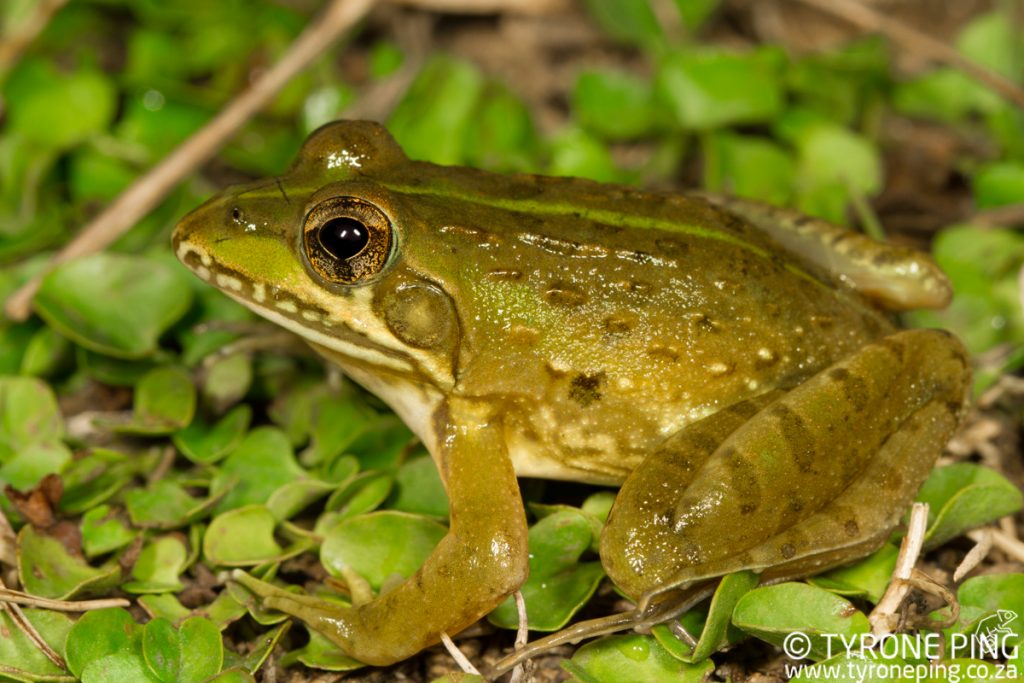
Sclerophrys capensis – Raucous Toad.
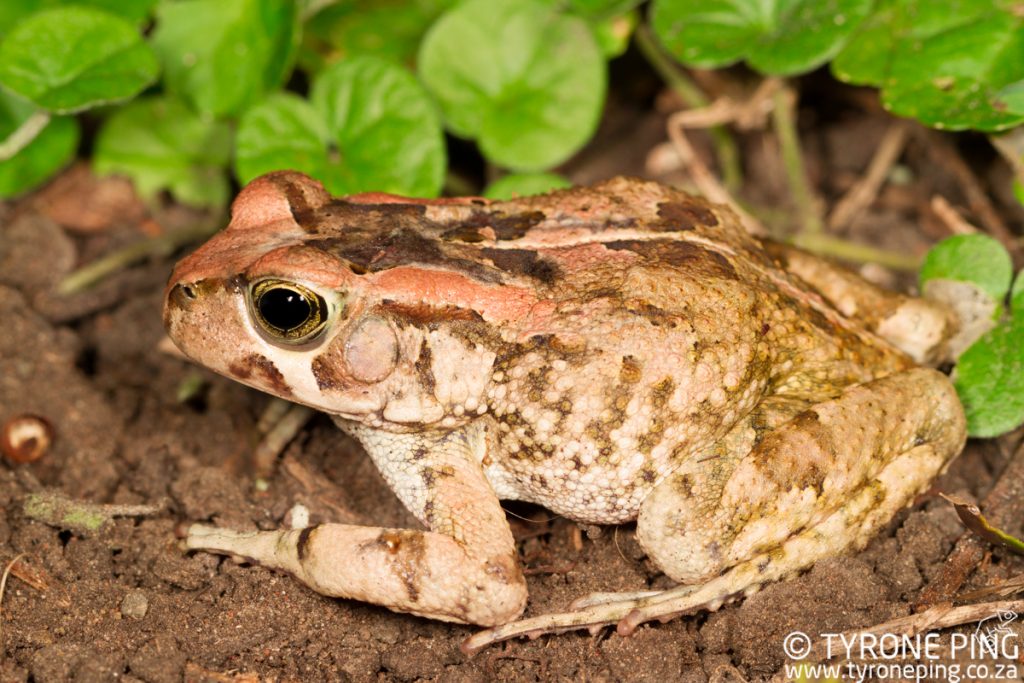
Strongylopus fasciatus – Striped Stream Frog.
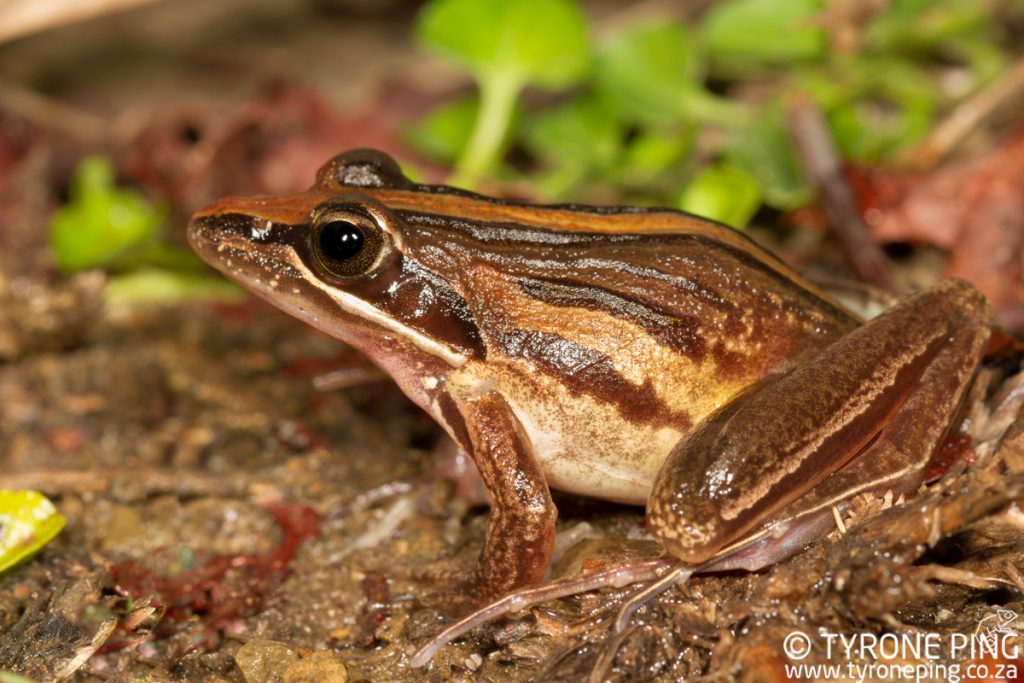
On the walk back, we made a quick stop at the cliffs overlooking the bay; Luke had seen some Girdled lizards a day prior, but I’m sure the intense winds blew them off by then.
Afrotyphlops bibronii – Bibrons Blind Snake.
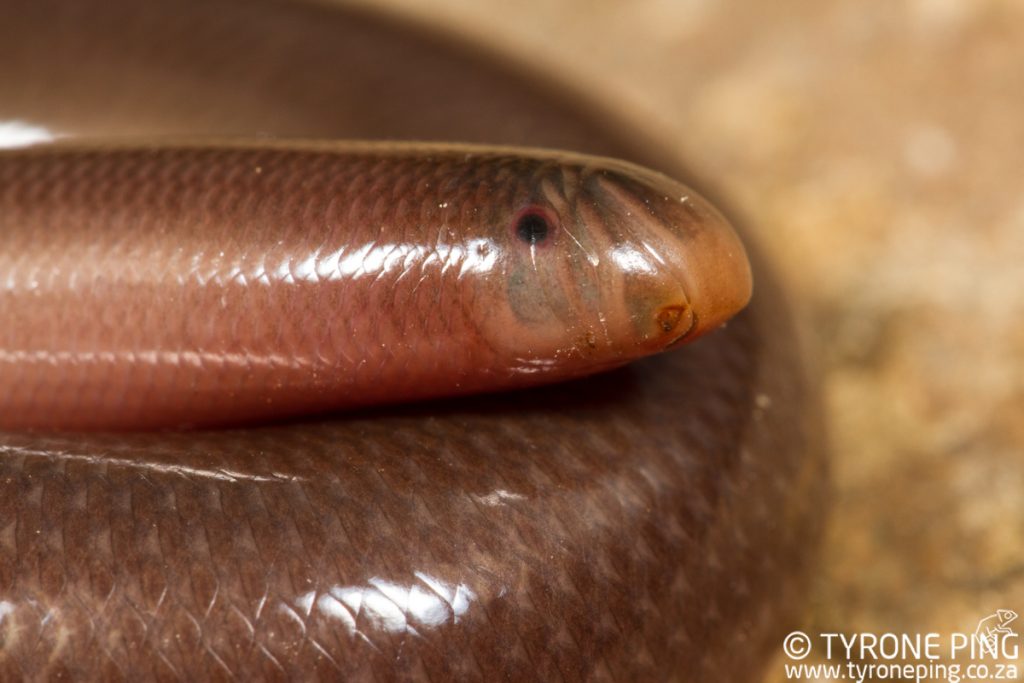
Afrotyphlops bibronii – Not known for their beauty, and fairly difficult to get photographs of.
Lygodactylus capensis – Cape Dwarf Gecko.
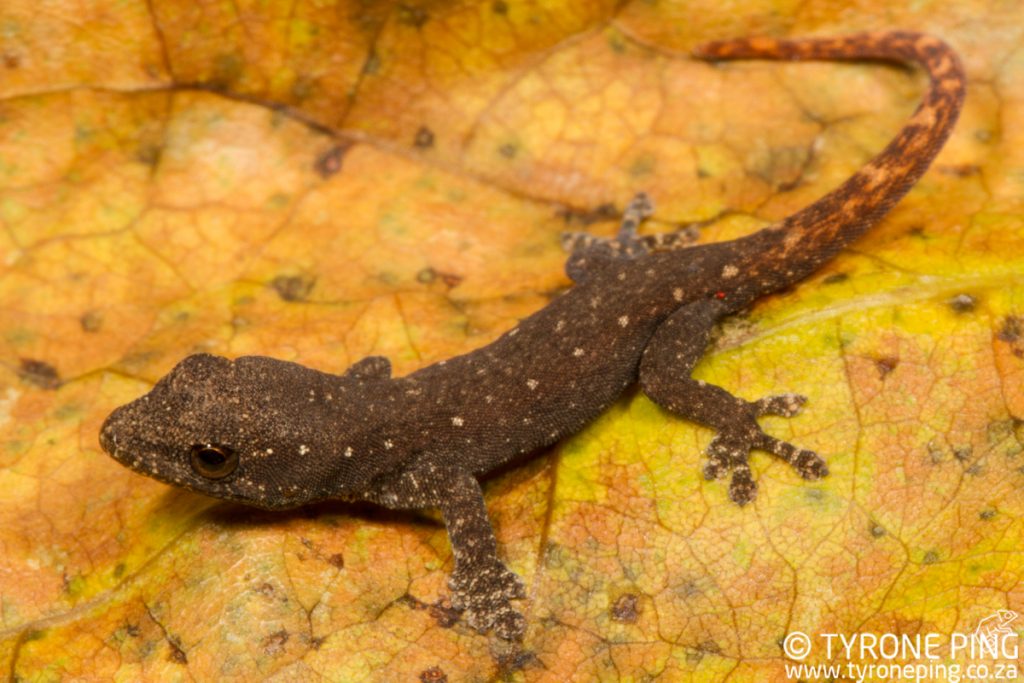
Lygodactylus capensis – One of the smallest specimens I’ve ever photographed; not more than 25mm.
Varanus niloticus – Nile Monitor.
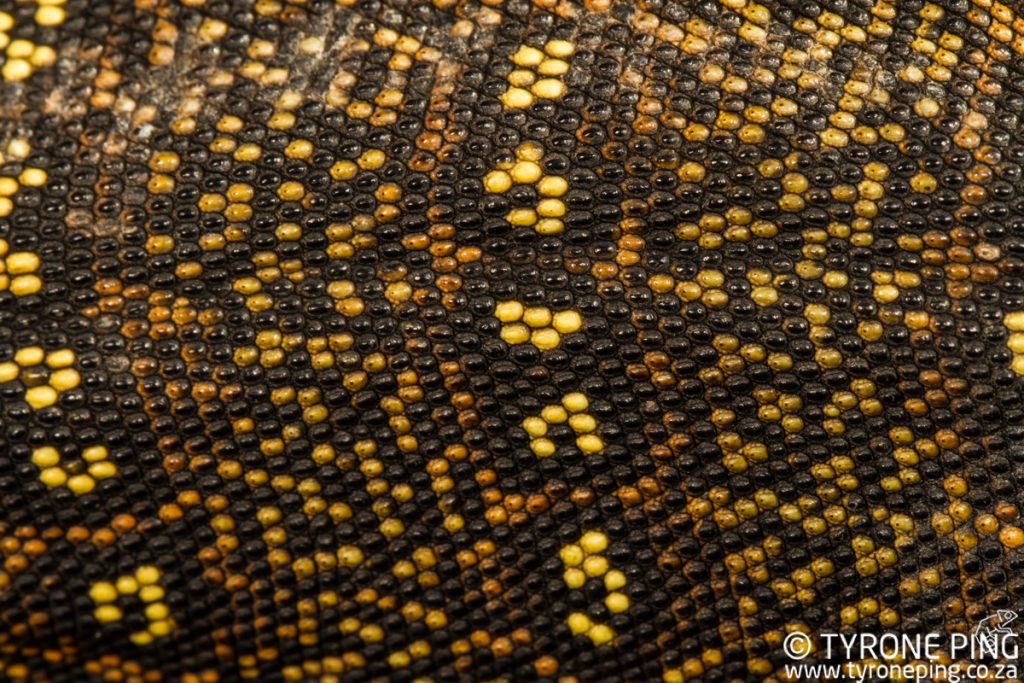
Up close detail of the skin of a young Nile Monitor.
Luke and I were walking on the property when Luke thought he spotted a Puff Adder crawl under a tree stump. We did some digging, only to reveal this young Nile Monitor. Their vivid coloration is quite similar to the Puff Adders found in the region.

Leptotyphlops scutifrons conjunctus – Peter’s Thread Snake.

Over the last three years, I’ve been focusing on the dwarf chameleons of South Africa, and this trip was no different with a specific target in mind, being the Kentani Dwarf Chameleon – Bradypodion kentanicum.
After news of an anecdotal record in the area, we decided to explore and see if we could find the species. According to the Animal Demographic Unit’s Virtual Museum, there were no records in the area, but we hoped to change that.
Waiting patiently on Friday evening for it to get dark enough to spot chameleons, we contemplated which areas we would search on the hunt for this anecdotal record, which was seen a few weeks prior. After a few cups of tea we set off; charged torches and headlamps at the ready. We made our way up some steep hills to an area of natural grassland, mainly covered in Narrow Leaved Turpentine Grass. Literature mentioned these chameleons are found in forests canopies, small bushes and only occasionally in grassland.
After a few minutes spent scanning reeds and small bushes, we came up empty handed. That was until Luke spotted an all-too-familiar, ghostly-grey form hanging on a tall stem of grass. Success!
Within a few minutes we found another two specimens in the immediate area; an adult female and a juvenile.
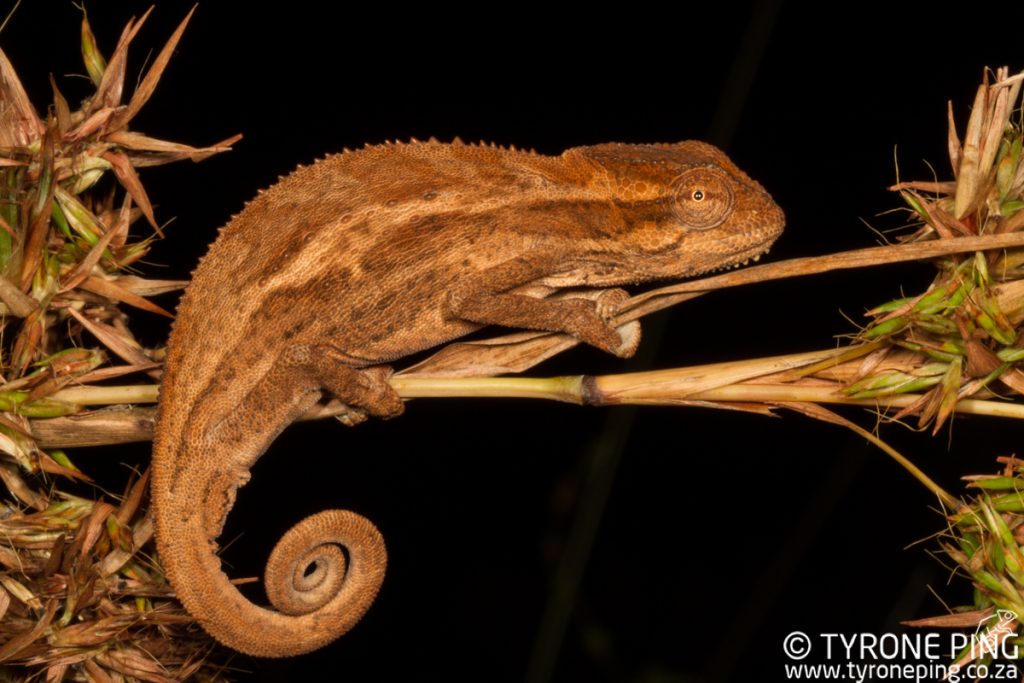
Adult Female Bradypodion kentanicum – Kentani Dwarf Chameleon.
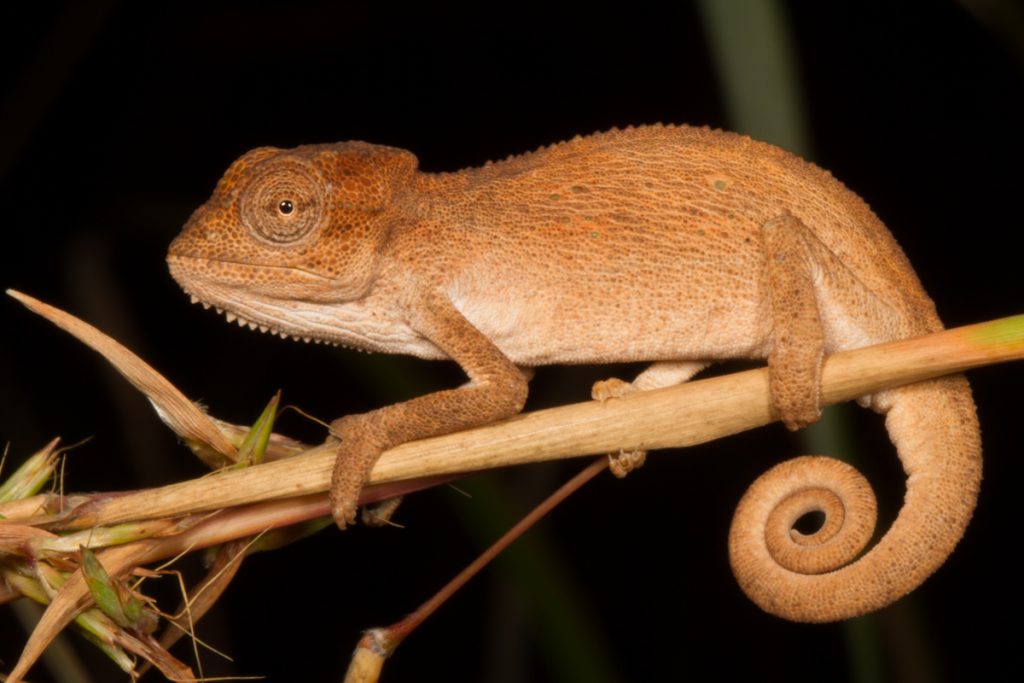
Juvenile Bradypodion kentanicum – Kentani Dwarf Chameleon.
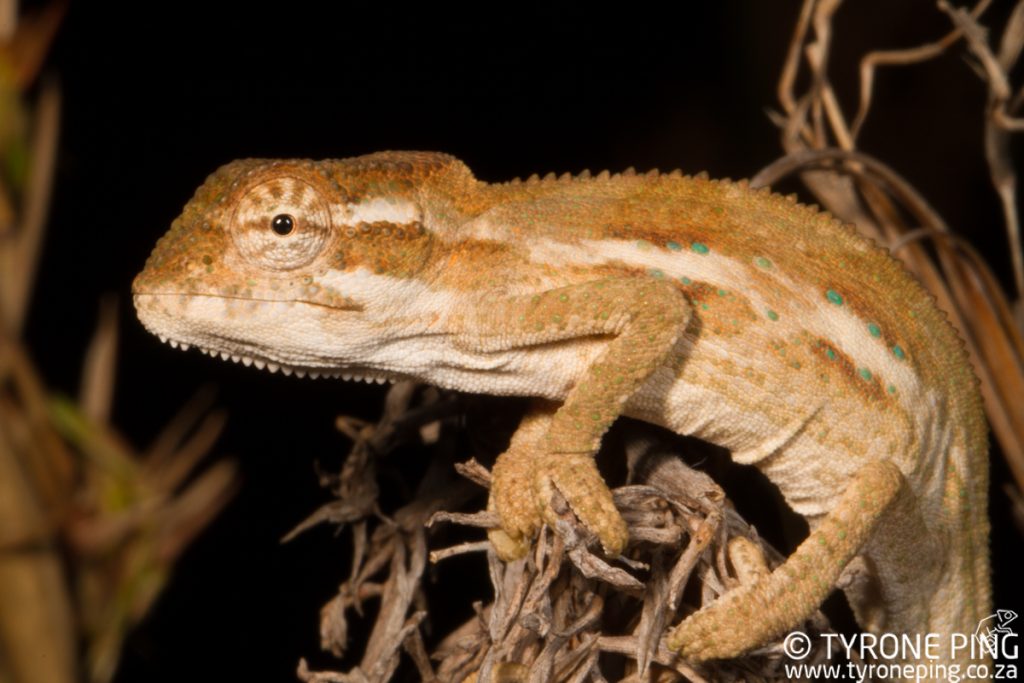
Adult male Bradypodion kentanicum – Kentani Dwarf Chameleon.
Over the next two nights we surveyed a few other locations, and found two more populations of these chameleons, completely separate from the initial area where we had found the first few animals.
These are great records to include on the virtual museum, and the owners of the Yellowwood Forest are thrilled that we’ve now positively identified these dwarf chameleons in the area. Not to mention, a few healthy populations of them, which will greatly aid in their plans to further protect the area. Development and subsistence farming threatens these sensitive grasslands.
After three days we found approximately 12 unique individuals; adult males, adult females, and a mix of juveniles.

Adult female, Bradypodion kentanicum – Kentani Dwarf Chameleon.
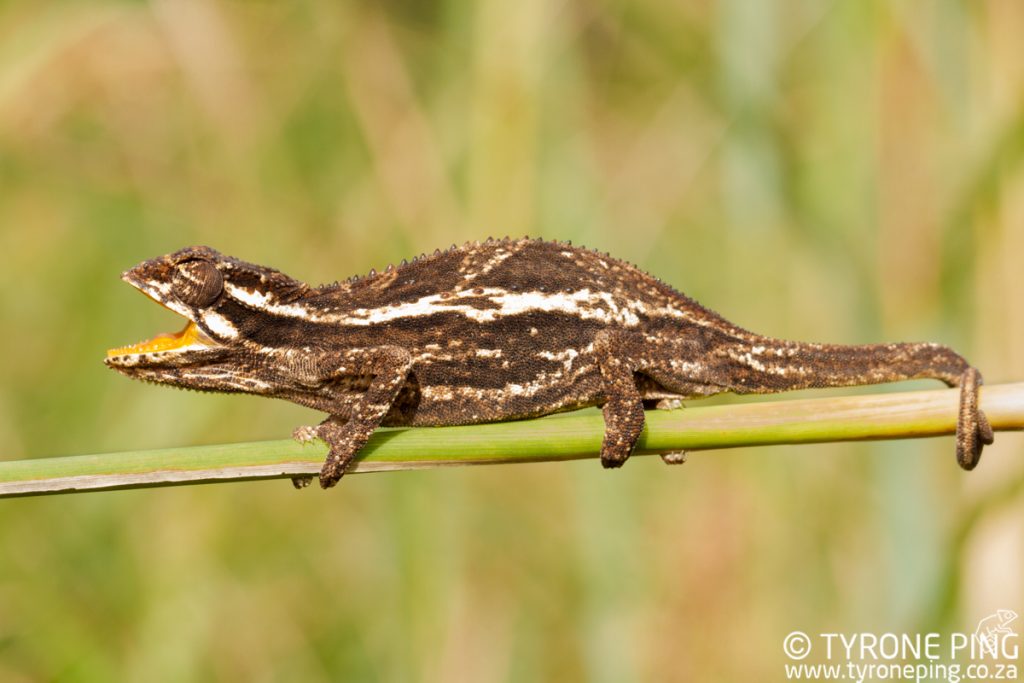
Adult female displaying to a male, Bradypodion kentanicum – Kentani Dwarf Chameleon.
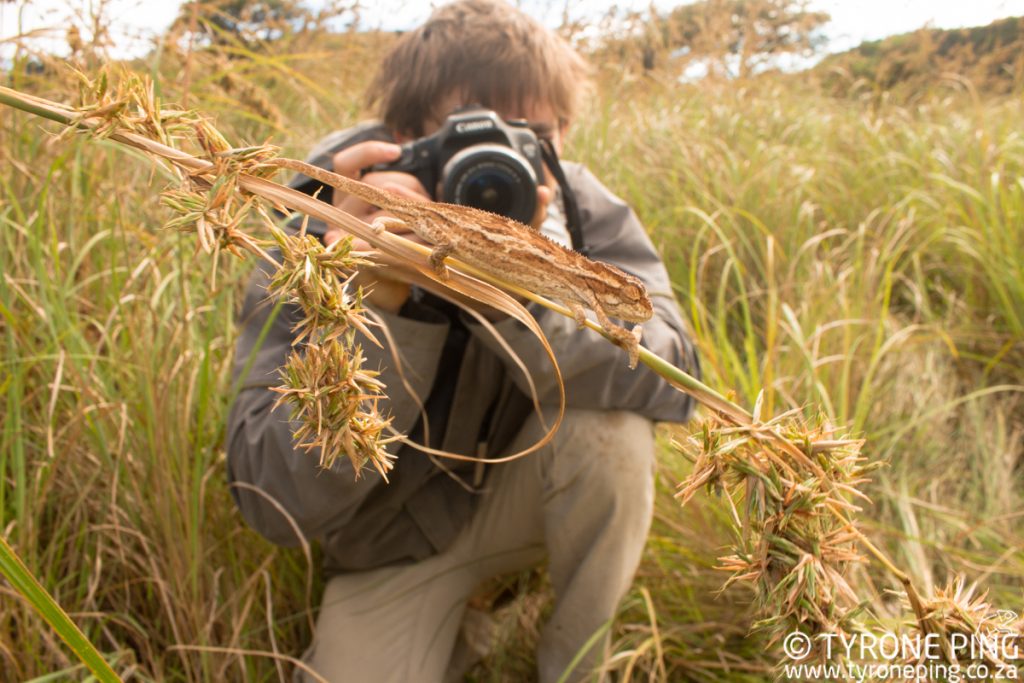
Luke photographing an adult male. Bradypodion kentanicum – Kentani Dwarf Chameleon.
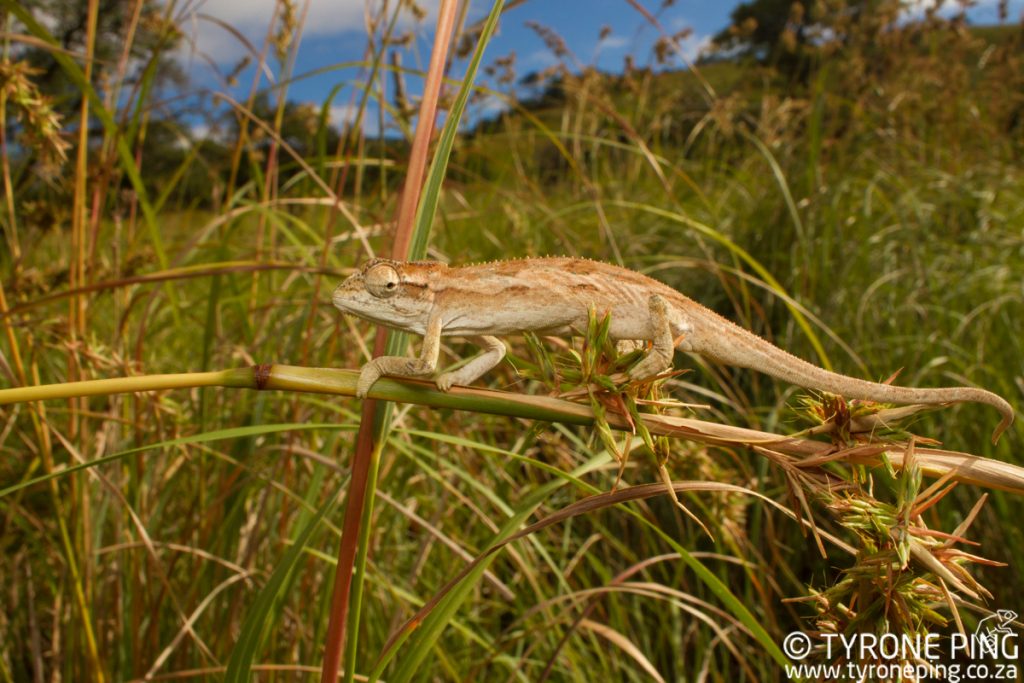
Typical habitat, Bradypodion kentanicum – Kentani Dwarf Chameleon.
My dwarf chameleon endeavour leaves me with one more species to find, at which point I’ll have found and photographed all 17 described species (and an undescribed one) within South Africa.
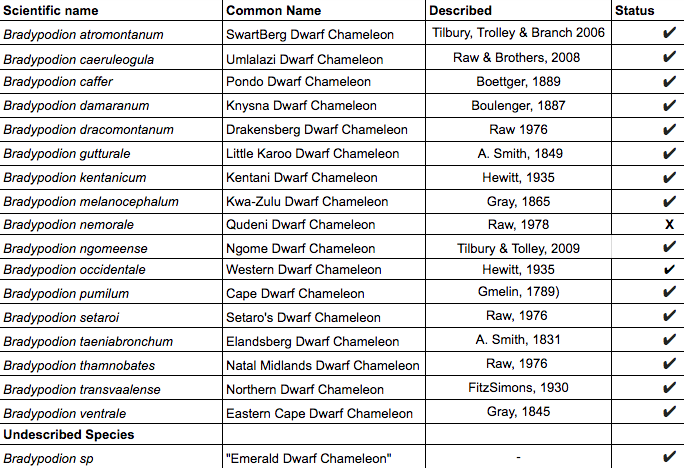
The described dwarf chameleons of South Africa.
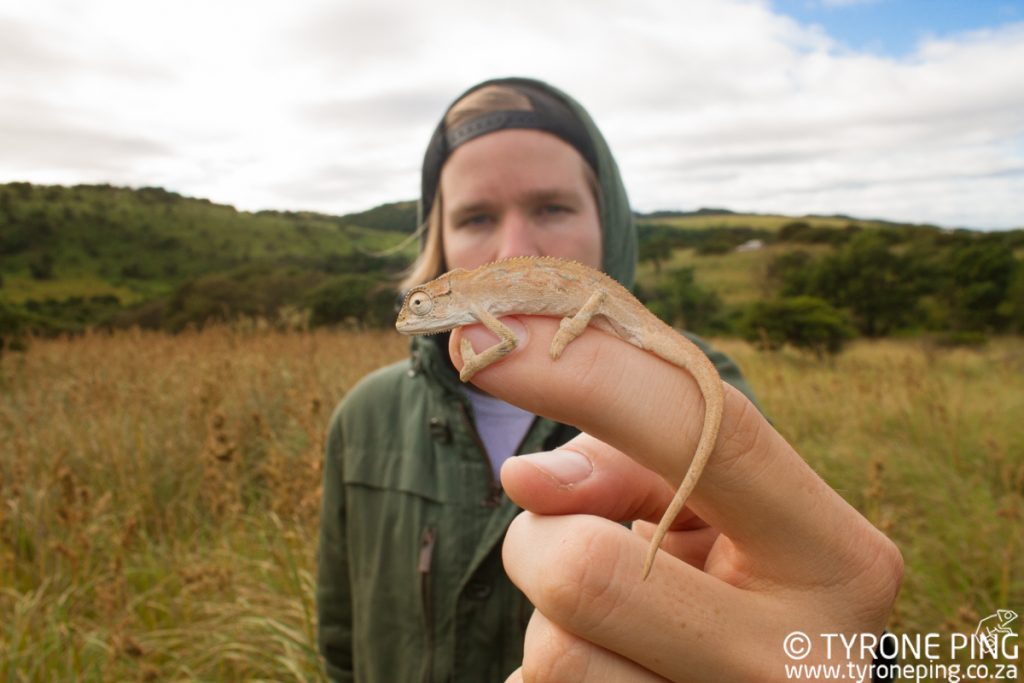
Kentani Dwarf Chameleon – Morgan Bay. Photo by Luke Kemp.
A big thank you to Sean & Robyn Rohm for the complimentary hosting of Luke and myself for the duration of our stay. We thoroughly appreciate it.
If you ever find yourself exploring the Eastern Cape, bookmark Morgan Bay and pay Sean and Robyn a visit. Stay for a coffee and leave with a pizza.
Don’t forget that you can now subscribe to the site for updates and new posts.
Now, time to get planning the final dwarf chameleon adventure… Anyone down for a quick trip?
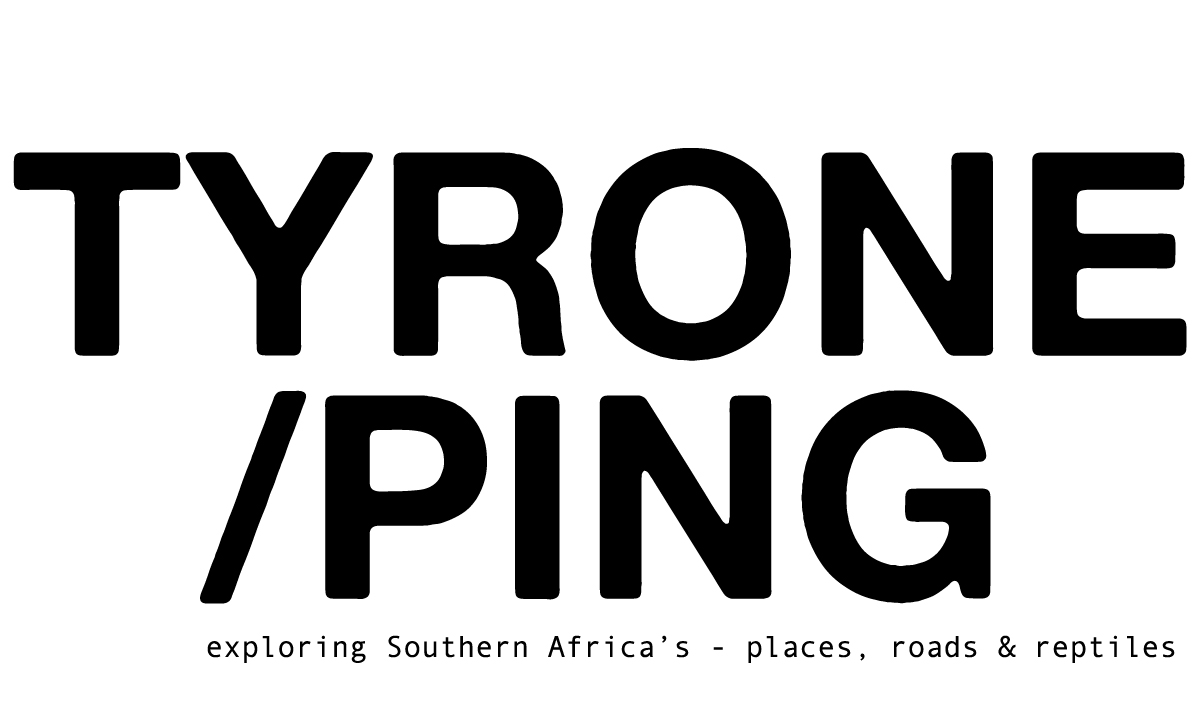





Excellent work once again guys!Awesome what you do- so important!!!! If ever in CT, come stay at our CENTRE (free)-we are a group of fanatical reptile/birds/everything actually! lovers down here
Pingback: My Homepage